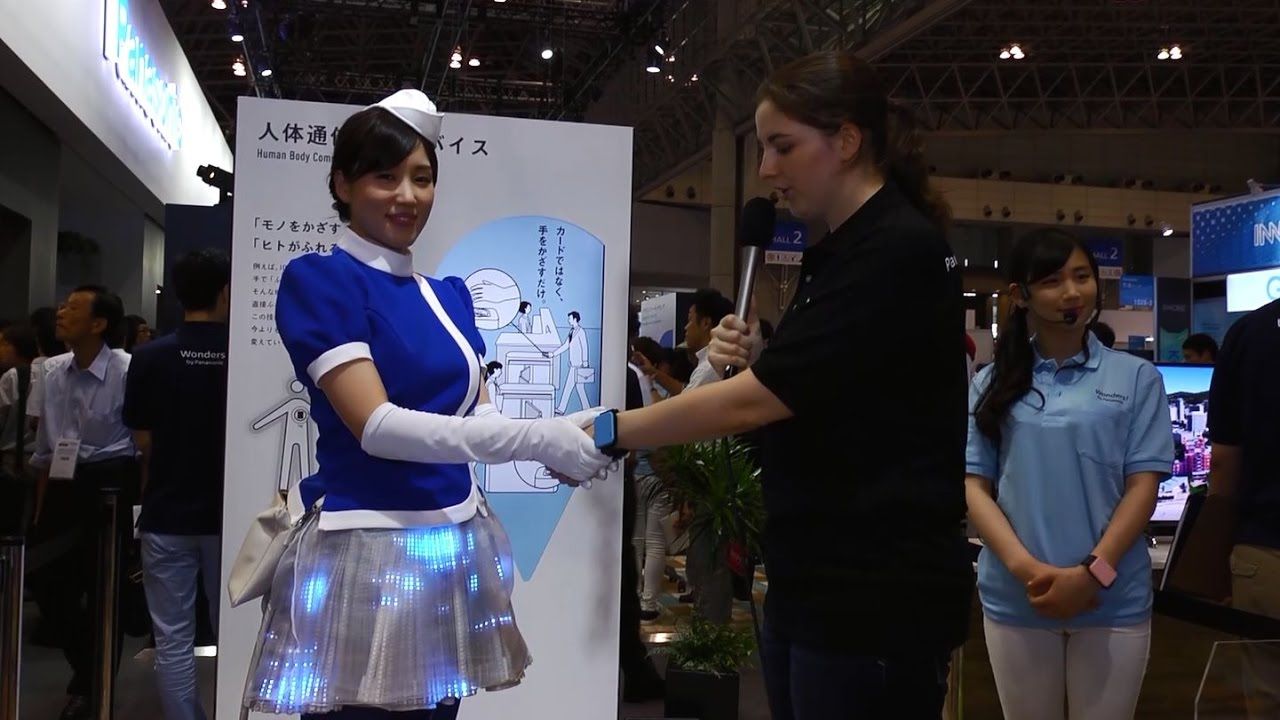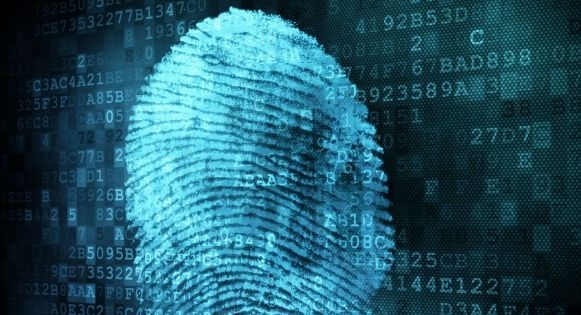Quantum computers pose a major threat to the security of our data. So what can be done to keep it safe?
Category: security – Page 120
In an age when digital information can fly around the connected networks of the world in the blink of an eye, it may seem a little old timey to consider delivering messages by hand. But that’s precisely what Panasonic is doing at CEATEC this week. The company is demonstrating a prototype communication system where data is transmitted from one person to another through touch.
There’s very little information on the system available, but Panasonic says that the prototype uses electric field communication technology to move data from “thing-to-thing, human-to-human and human-to-thing.” Data transfer and authentication occurs when the objects or people touch, with digital information stored in a source tag instantaneously moving to a receiver module – kind of like NFC tap to connect technology, but with people in the equation as well as devices.
It has the potential to allow business types to exchange contact information with a handshake, mood lighting in a room to be changed to match or contrast with clothing when a lamp is touched or access to a building granted by placing a hand or object on a lock interface or door handle. And Panasonic suggests that because the data is traveling through the body and not over the air, secure transmission is assured.
Modernize Your Data Center’s DNA
Posted in security
As security threats are more sophisticated today than in the past, modern data centers are becoming increasingly vulnerable. Micro-segmentation is your answer to protect your data center against these sophisticated threats. Read this trend brief to see how it builds security into the DNA of the data center for a cost-effective, future-proof way to protect what matters.
Nice POV read.
We know that emerging innovations within cutting-edge science and technology (S&T) areas carry the potential to revolutionize governmental structures, economies, and life as we know it. Yet, others have argued that such technologies could yield doomsday scenarios and that military applications of such technologies have even greater potential than nuclear weapons to radically change the balance of power. These S&T areas include robotics and autonomous unmanned system; artificial intelligence; biotechnology, including synthetic and systems biology; the cognitive neurosciences; nanotechnology, including stealth meta-materials; additive manufacturing (aka 3D printing); and the intersection of each with information and computing technologies, i.e., cyber-everything. These concepts and the underlying strategic importance were articulated at the multi-national level in NATO’s May 2010 New Strategic Concept paper: “Less predictable is the possibility that research breakthroughs will transform the technological battlefield … The most destructive periods of history tend to be those when the means of aggression have gained the upper hand in the art of waging war.”
As new and unpredicted technologies are emerging at a seemingly unprecedented pace globally, communication of those new discoveries is occurring faster than ever, meaning that the unique ownership of a new technology is no longer a sufficient position, if not impossible. They’re becoming cheaper and more readily available. In today’s world, recognition of the potential applications of a technology and a sense of purpose in exploiting it are far more important than simply having access to it.
While the suggestions like those that nanotechnology will enable a new class of weapons that will alter the geopolitical landscape remain unrealized, a number of unresolved security puzzles underlying emerging technologies have implications for international security, defense policy, deterrence, governance, and arms control regimes.
Robotic Custom Guards — could this be the answer to all countries problems for border security and police as part of fairness?
NK Technology, Beijing, Oct 2 : Ten robots have started working as customs officers at three ports in China’s Guangdong province, authorities said on Sunday.
They were the first batch of intelligent robots, to be used by Chinese customs at the ports of Gongbei, Hengqin and Zhongshan, Xinhua news agency reported.
The robots, named Xiao Hai, have state-of-the-art perception technology and are able to listen, speak, learn, see and walk.
Nice article; however, not sure if the author is aware Los Alamos already has a quantum net as well as some Europe banks have the capabilities and 4 months ago it was announced that a joint effort by various countries from Europe, Asia, etc. have come together to re-engineer the Net infrastructure with QC technology…
Maybe the quantum will giveth what the quantum taketh away… at least when it comes to secure transmissions.
There’s been much speculation that emerging quantum computers will become capable of breaking advanced public key cryptography systems, such as 2048-bit RSA. This might leave encrypted data transmissions exposed to anyone who happens to own such a quantum computer.
According to a recent report by the Global Risk Institute (GRI):
The huge wave of Internet of Things (IoT) enabled devices has the U.S. government worried that the technology harbors lurking security threats.
According to a Defense One article, the U.S. Department of Justice has joined other agencies in evaluating IoT technology for national security risks.
And with up to 50 billion connected devices coming online by 2020, the government is scrambling to assess threats from the fast evolving technology.
My new story for VentureBeat on the coming of robot bodyguards. I’ll be speaking about this next week at RoboBusiness 2016, a major robotics conference in San Jose:
I recently consulted with the US Navy on all things “transhuman.” In those conversations about how science and technology can help the human race evolve beyond its natural limits, it was clear that military is keen on replacing human soldiers with both fighting and peacekeeping machines so American military lives never have to come under fire or be in harm’s way.
However, it’s the peacekeeping technology that is particularly interesting for many civilians. While you wouldn’t want an armed Terminator in your home, you might like a robot that travels with you and offers personal protection, like a bodyguard. In a survey by Travelzoo of 6,000 participants, nearly 80 percent of people said they expect robots to be a significant part of their lives by 2020 — and that those robots might even join them on holidays.
The robotics industry is already considering this, and recently debuted some security models. A few months ago China came out with its Anbot, which can taser people and be used for riot control. And South Korea already uses mobile robot guards in its prisons. Even in San Francisco, you can rent out robot guards to protect your businesses and property. However, the rent-a-robot company, Knightscope, recently came under fire for accidentally running over a toddler at the Stanford Shopping Center.
Definitely less than a decade and even less than 7 especially with China Quantum Satellite, Google’s plan release next year of a Quantum device, etc. I hope folks don’t still believe that we’re immune from a QC attack after 2025.
In a rare public speech, Greta Bossenmaier, chief of the Communications Security Establishment, said cryptologists at the CSE and around the world are racing to find new cryptographic standards before Y2Q — years to quantum — predicted for 2026.
She is the third senior CSE official this week to warn publicly of the threat quantum computing poses to widely used public key cryptography (PKC), protecting sensitive data transmissions from hackers, hacktivists, foreign state spies and other malicious actors.
READ MORE: Why the silencing of KrebsOnSecurity opens a troubling chapter for the internet.







